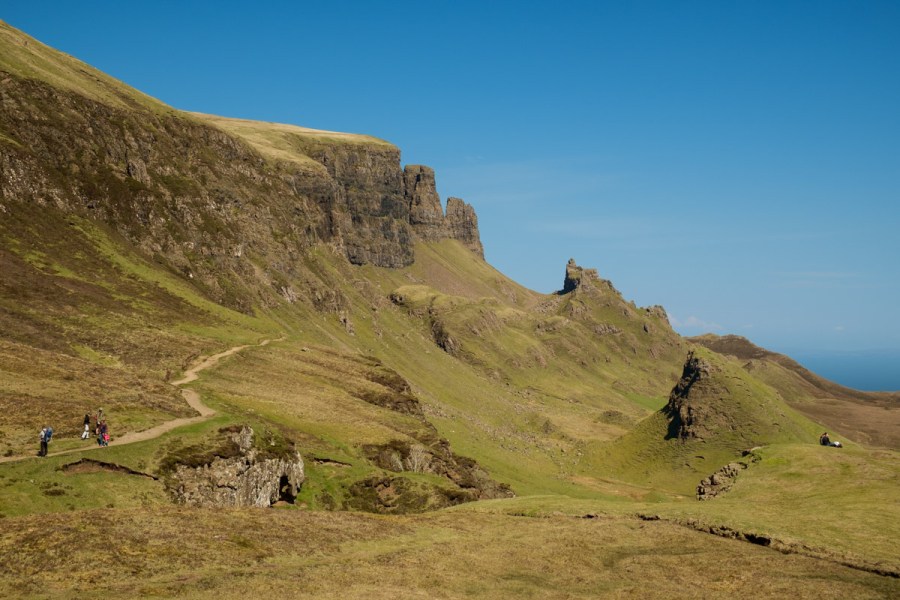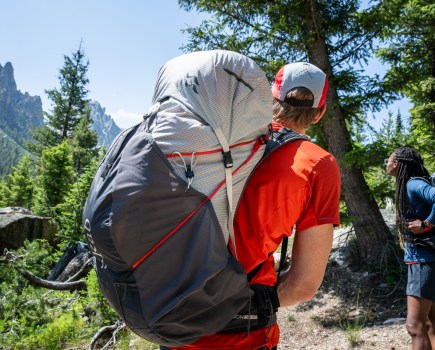Roger Smith looks at the difficult balance between tourism and the environment in his column for The Great Outdoors this month
As we approached the start of the walk it was obvious we were not going to have it to ourselves. The ‘parking area’ was merely a length of track onto which cars crammed themselves sideways-on. I counted more than 50 vehicles, and we were lucky to grab a space as someone else was leaving.
It was mid-July and we were walking out to the Coral Beaches in the north-west of Skye, not far from Dunvegan Castle. This walk has only recently become popular. Older OS maps don’t even show the beaches: the latest Landranger sheet 23 not only marks them but also has symbols for a parking area and walk. The approach from Dunvegan is 8km of twisty single-track road, difficult for cars and even worse for campervans. It’s a nice short walk with great views (the beaches aren’t really coral, by the way, they are a type of bleached coralline seaweed).
You may have read of the problems on Skye this summer. The island has a population of about 10,000, but can receive up to 70,000 visitors at peak times. In July and August, people were being stopped at Mallaig and asked not to board the ferry to Armadale unless they had accommodation booked, as there was none available.
This means that previously quiet corners like the Coral Beaches – and the same applies at the Fairy Pools near Sligachan, the Old Man of Storr and The Quiraing – are in danger of being overrun and damaged. If you go to isleofskye.com you will find these four all listed in their Top 10 walks on Skye. Overseas visitors having read enthusiastic reviews expect facilities such as toilets and cafes, but the reality is there aren’t even sufficient parking places.
Skye is in danger of marketing itself to death. It has appeared in films like The BFG and in videos for Kanye West and Harry Styles. So people come to take a look, but the infrastructure to deal with them is not in place. The same applies to the North Coast 500, a road route promoted for its wildness and scenic beauty. It includes sections such as the Bealach na Ba over to Applecross, a single-track road twisting up to nearly 600 metres at its summit and no place for anyone unsure of their driving ability.
I can see the basic problem. In places like Skye and the Northern Highlands, the tourist season is short. By the end of September there will be few cars at the Coral Beaches parking place and you will be able to enjoy The Quiraing in relative peace. But there will also be an environmental cost to be met before next year’s visitor season is upon us – and who will look after that? It’s a big question that has yet to be answered.
Another place in danger of over-marketing is the Lake District. No short season here, of course – it’s become a year-round destination and its promotion will now be boosted by the recent award of World Heritage Site status. I am entirely with Friends of the Lake District in seeing this as a double-edged sword. It does not, of itself, bring extra cash or resources, and we have seen the budget allocations for all our National Parks ruthlessly cut by central government in recent years. The Lakes are so popular that millions have to be spent every year on essential maintenance of paths and other infrastructure such as signage, gates etc. Too much of this is devolving downwards onto groups like Fix the Fells. If we are to promote the Lake District (which currently receives an estimated 17 million visitors a year, a quite staggering figure) as a site worthy of the accolade World Heritage then it is absolutely essential to provide the proper resources to keep the quality high.
It is also important that the tourism spend benefits the local economy, though I am not sure if the latest wheeze, to create a Lake District pound, is moving us in the right direction. The scheme would enable you to exchange your ordinary pounds for LD pounds in local shops and then spend this money locally. It follows similar initiatives in Totnes, Lewes and Stroud, where these schemes have had limited success.
Mass tourism is becoming a big problem in many places. Venice is in serious danger of being totally overrun by the hordes from huge cruise liners descending on the city. Nearer to home, the harbour at Kirkwall in Orkney has been deepened to take these liners, which can hold up to 4,000 passengers. There is a real danger here of unique and fragile places like Skara Brae being harmed, and they will have to be carefully managed, but Orkney seems generally to be coping, a major factor being that, unlike the people pouring onto Skye, cruise liner passengers aren’t looking for overnight accommodation. Perhaps we need a couple of empty cruise liners moored off the Winged Isle….
Photo © Alex Roddie
Playing the numbers game – balancing tourism and the environment








